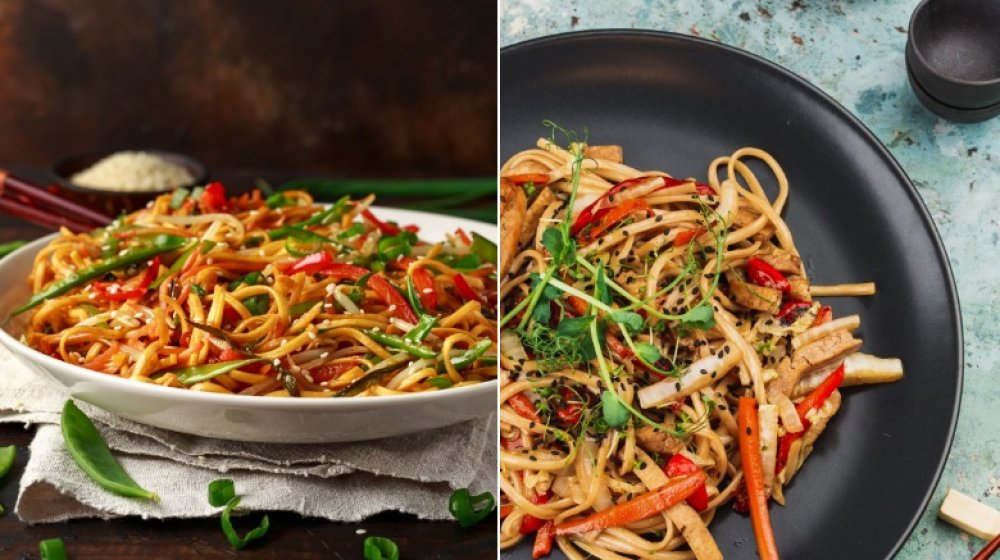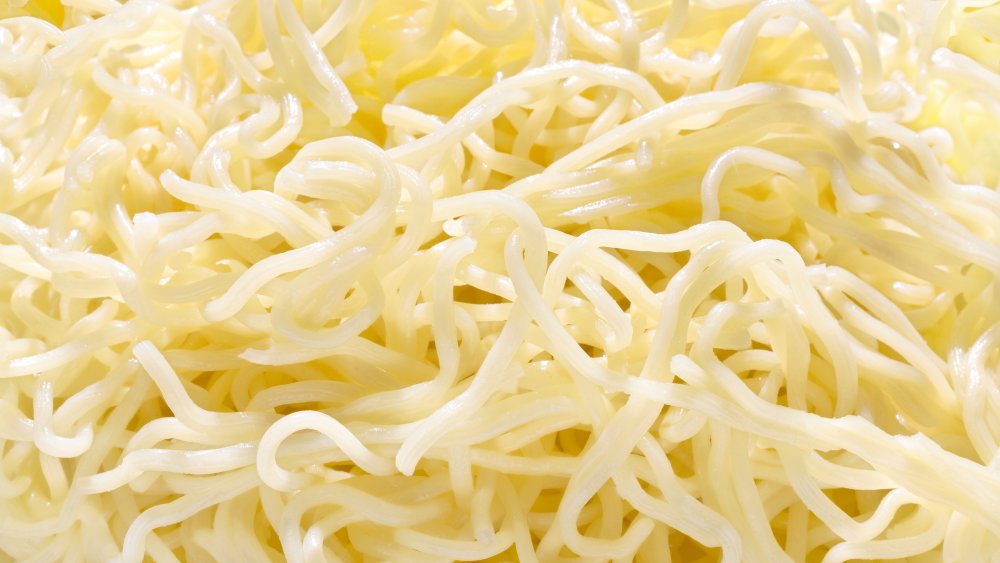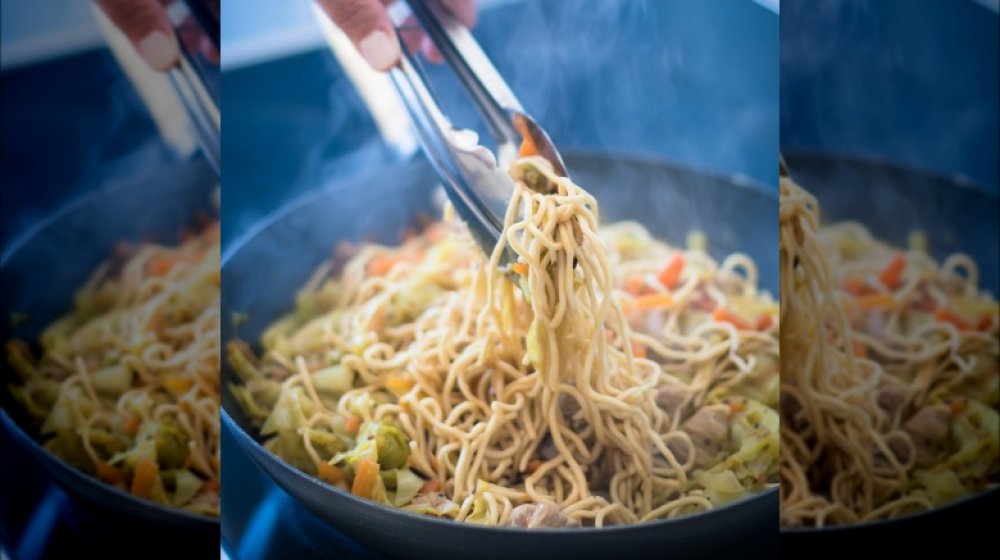What's The Real Difference Between Chow Mein And Lo Mein?
Chow mein and lo mein are both very popular dishes found on just about every Chinese restaurant menu, from the sketchiest all-you-can-eat buffets to chain restaurants like Panda Express to slightly more upscale eateries like P.F. Chang's. Both are noodle-based dishes originating from northern China, where the terrain, according to Southern Living, is more suited to growing wheat than rice.
While their names may sound somewhat similar, so much so that it can be a source of frequent confusion to restaurant patrons who can't seem to remember which is which, the difference between chow mein and lo mein is clearly spelled out in their names — at least, as long as you speak Chinese. "Mein" loosely translates to mean noodles, but "chow" refers to noodles that have been fried, while "lo" refers to noodles that have been stirred.
Type of noodles used for chow mein and lo mein
Both chow mein and lo mein are typically prepared with Chinese egg noodles made from wheat flour. The Spruce Eats suggests that fresh noodles are best for lo mein, but dried or fresh noodles can be used to prepare chow mein.
Both fresh and dried noodles must be parboiled before being used for cooking, but fresh noodles only require 2 to 3 minutes in boiling water while dried noodles may take 5 to 6 minutes. Both types of should be boiled only until "al dente," or slightly chewy, as they will be cooked (or at least heated) further during the course of preparing either chow mein or lo mein.
The difference in preparation
Chow mein noodles are fried after being boiled, so they are crispy by the time the vegetables, meat, and sauce are added to the skillet or wok. According to MSN Lifestyle, the addition of sauce to the chow mein lends the fried noodles a somewhat chewy texture.
With lo mein, the noodles are added to the already stir-fried meat and veggies. They are not cooked with the other ingredients, but are instead quickly tossed in and stirred right before serving. As the noodles in lo mein have somewhat less flavor than the fried ones used for chow mein, lo mein typically contains more sauce and seasonings.
Restaurant-prepared noodle dishes are often high in fat, sodium, and calories, putting them in the category of things you probably shouldn't be ordering. Healthier versions of chow mein and lo mein, however, can easily be prepared at home.


